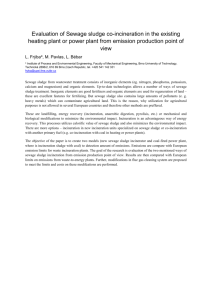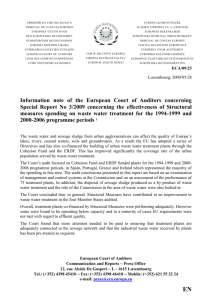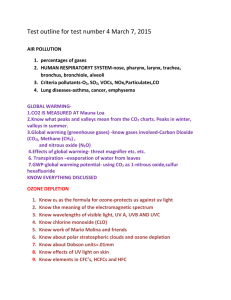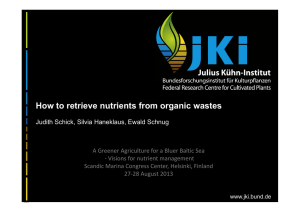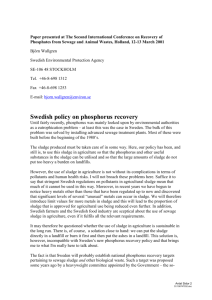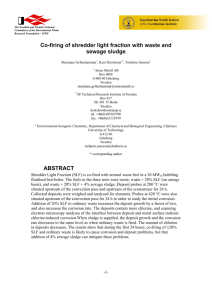Project Fact File
advertisement
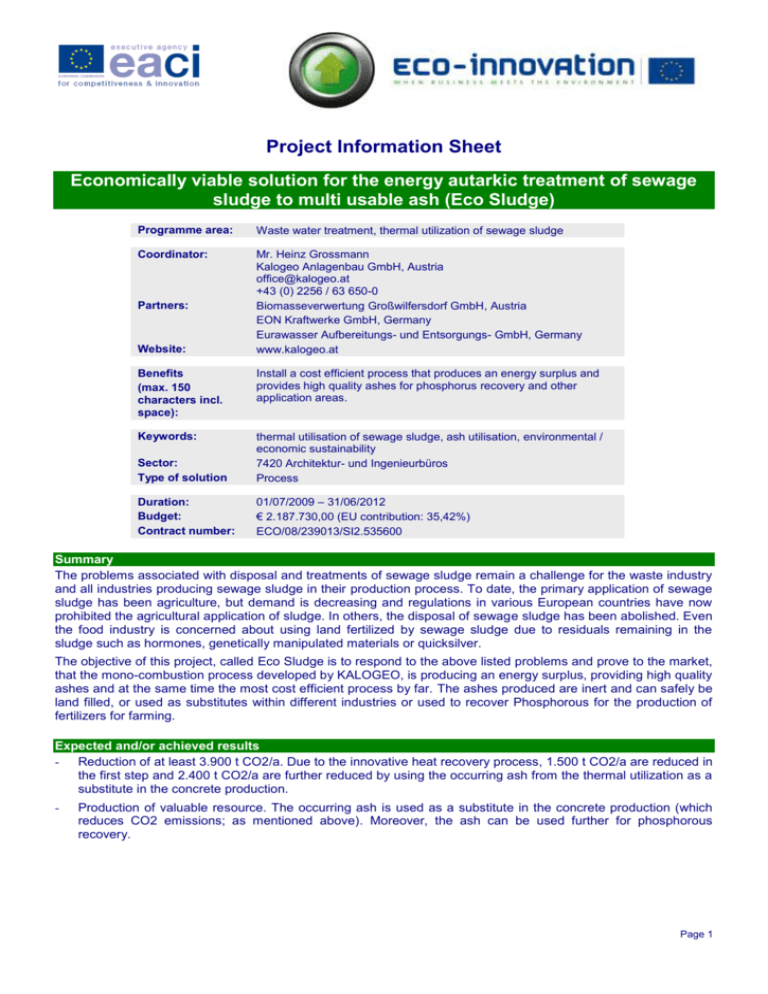
Project Information Sheet Economically viable solution for the energy autarkic treatment of sewage sludge to multi usable ash (Eco Sludge) Programme area: Waste water treatment, thermal utilization of sewage sludge Coordinator: Mr. Heinz Grossmann Kalogeo Anlagenbau GmbH, Austria office@kalogeo.at +43 (0) 2256 / 63 650-0 Biomasseverwertung Großwilfersdorf GmbH, Austria EON Kraftwerke GmbH, Germany Eurawasser Aufbereitungs- und Entsorgungs- GmbH, Germany www.kalogeo.at Partners: Website: Benefits (max. 150 characters incl. space): Install a cost efficient process that produces an energy surplus and provides high quality ashes for phosphorus recovery and other application areas. Keywords: Sector: Type of solution thermal utilisation of sewage sludge, ash utilisation, environmental / economic sustainability 7420 Architektur- und Ingenieurbüros Process Duration: Budget: Contract number: 01/07/2009 – 31/06/2012 € 2.187.730,00 (EU contribution: 35,42%) ECO/08/239013/SI2.535600 Summary The problems associated with disposal and treatments of sewage sludge remain a challenge for the waste industry and all industries producing sewage sludge in their production process. To date, the primary application of sewage sludge has been agriculture, but demand is decreasing and regulations in various European countries have now prohibited the agricultural application of sludge. In others, the disposal of sewage sludge has been abolished. Even the food industry is concerned about using land fertilized by sewage sludge due to residuals remaining in the sludge such as hormones, genetically manipulated materials or quicksilver. The objective of this project, called Eco Sludge is to respond to the above listed problems and prove to the market, that the mono-combustion process developed by KALOGEO, is producing an energy surplus, providing high quality ashes and at the same time the most cost efficient process by far. The ashes produced are inert and can safely be land filled, or used as substitutes within different industries or used to recover Phosphorous for the production of fertilizers for farming. Expected and/or achieved results - Reduction of at least 3.900 t CO2/a. Due to the innovative heat recovery process, 1.500 t CO2/a are reduced in the first step and 2.400 t CO2/a are further reduced by using the occurring ash from the thermal utilization as a substitute in the concrete production. - Production of valuable resource. The occurring ash is used as a substitute in the concrete production (which reduces CO2 emissions; as mentioned above). Moreover, the ash can be used further for phosphorous recovery. Page 1 - Production of surplus energy. 7.500 MWh surplus energy is produced per year. The surplus heat will be delivered to a concrete production company right next to the installation. - Reduction of primary energy sources. 677.500 m³/a natural gas is reduced, due to the innovative energy recovery process. The target markets on EU level are Germany, followed by the UK, Italy and Poland. Germany is a primary market due to the market maturity, the awareness of improving the environmental performance of all sectors, industries and public and for having very strict regulations. Further Poland, Italy and UK are interesting markets due to increasing amounts of sewage sludge over the past 5 years (e.g. UZK from 1 Mio t to 1.4 Mio t) and relatively few measures taken by industries and the public to deviate sewage sludge amounts from disposal to treatment. In Italy incineration is practically not available, so interesting market volumes are to be expected. Phosphorus recovery market Depletion of current economically exploitable reserves of phosphorus are estimated at somewhere from 60 to 130 years. Increasing demand and increasing prices will make more reserves economically exploitable. The potential total phosphorus from sludge in the EU could amount to about 300.000 tons of P/A. The annual phosphorous consumption in the EU derived from phosphate rock is about 1,340.000 t/a as phosphatic mineral fertilizers, 250.000 t/a as animal feed supplements and 110.000 t/a for the manufacturing of detergents. The current policy within the EU is to promote the recycling of this resource. Several studies support recycling as the most sustainable route for the use of this resource. The KALOGEO process could provide ashes at a quality to be used for recovery of phosphorous. Page 2



